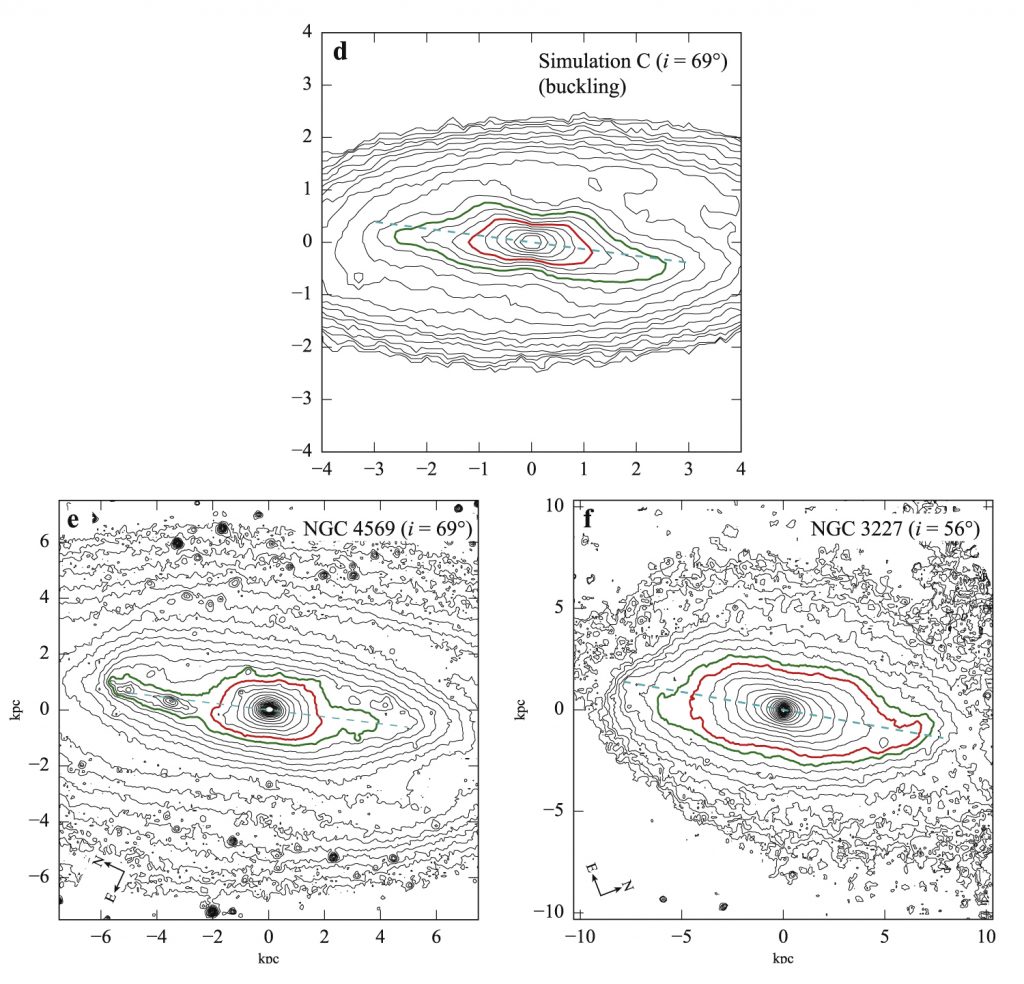
JHI Astrophysicist Involved in the Direct Detection of Buckling Bars in Galaxies
Featured Image: Top panel: An N-body simulation showing the buckling of a galactic bar. Bottom panels: the two galaxies discovered in this study (NGC 4569 and NGC 3227), which show characteristics of buckling bars matching simulations. [Adapted from Erwin & Debattista 2016].
Our home galaxy the Milky Way, like many disk galaxies, has a stellar bulge at the centre of the disk. These bulges are typically vertically thickened in the inner regions. This vertical thickness gives these bulges a boxy or peanut-shaped appearance when viewed edge-on view so are called “B/P bulges”.
Over the past twenty years, simulations of galaxy evolution have predicted how these shapes arise through an instability that a bar experiences. The instability bends the bar violently up and down, thickening it and giving rise to the B/P-shape.
While simulations have been making this prediction for over 20 years, there has been no direct observational detection of this instability. Recently Peter Erwin (Max Planck Institute for Extraterrestrial Physics, Germany) and the Jeremiah Horrocks institute member Victor Debattista searched through a sample of barred disk galaxies looking for buckling bars. They found two galaxies, NGC 4569 and NGC 3227, which are buckling right now.
This identification was made by comparing observations to simulations of bars during the buckling phase. The authors identifed the characteristics of buckling bars in terms of the density distribution and the velocities of stars. Both NGC 4569 and NGC 3227 match the morphological predictions while spectroscipic data available for NGC 4569 also matched the predictions. This finally proves that the buckling instability really does happen in nature, resolving a puzzle about bulge formation and increasing confidence in over 20 years worth of simulation studies
Erwin and Debattista’s work was published in the Astrophysical Journal and was described in New Scientist and also AAS Nova.
A video showing an animation of bar buckling can be found here
